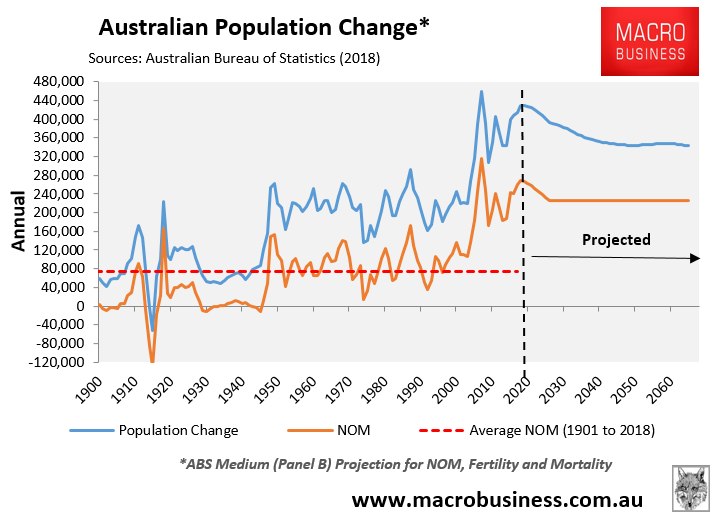L-plate Treasurer, Josh Frydenberg, admitted that the Government’s faux concern of immigration late last year was a smokescreen, committing to a turbo-charged migrant intake and a ‘Big Australia’ at Friday’s COAG population meeting. From The Australian:
“Our plan is to continue to grow the economy and to continue to have a very strong and robust and welcoming immigration system,” the Treasurer said, after agreeing on measures with the states to plan for population growth. He said immigration was also critical in mitigating the challenges of an ageing population and “it will continue to be strong here in Australia”.
However, the two biggest states turned the immigration gun back on the federal government and demanded increased infrastructure spending to cope with growth:
“We continue to not get our fair share of infrastructure investment,” NSW Treasurer Dominic Perrottet said.
“Victoria and NSW have the lowest rate of commonwealth infrastructure investment on a per capita basis. The federal government get all the benefits of immigration but we get all the costs.”
Victorian Treasurer Tim Pallas said the federal government must commit to properly funding the state’s infrastructure needs…
Here’s more from The SMH:
Victorian Treasurer Tim Pallas said the federal government was only an “interested dilettante” on the question of how to accommodate a growing population when it did not fund enough infrastructure.
Mr Pallas said the meeting raised questions about the “carrying capacity” of each state when the answer depended in part on the Commonwealth’s ability to fund new road and rail projects to accommodate more people.
“This reinforced the fact that we can’t have a discussion about migration in isolation. The Commonwealth needs to back up its interest in the area with a commitment to help fund infrastructure in the states,” Mr Pallas said after the meeting.
The vertical fiscal imbalances (VFI) surrounding the federal government’s mass immigration ‘Big Australia’ policy is at the heart of the issue.
As the federal government receives 80% of Australia’s tax revenue, it sees mass immigration as an unambiguous positive, since it collects the lion’s share of the financial benefits via personal and company taxes.
The states, by contrast, are left carrying the cost of infrastructure and services to support population growth (think roads, public transport, schools and hospitals).
Analysis by the Grattan Institute in 2014 showed that “unprecedented infrastructure spending by states and territories” since the escalation of population growth from 2004 is “largely responsible for a $106 billion decline in their finances since 2006“, and that “after a threefold increase in capital spending over the last 10 years, states are paying 3 per cent more of their revenues in interest and depreciation”.
Separately, Grattan executive director, John Daley, recently noted that “state governments were struggling to deal with rapid population growth in their major cities and the quality of life of residents – represented by the rapid growth in house prices in recent decades – was suffering”.
To date, the states have ‘managed’ these costs by shoving massive infrastructure spending off balance sheet, including through privatising assets via budget tricks like Public Private Partnerships (PPPs). In the process, this has created substantial hidden costs for residents – effectively private taxes – via things like tolls and user pays charges.
Infrastructure provision has also failed miserably to keep pace with population growth, as explicitly noted by Infrastructure Australia in December, resulting in crushed living standards.
Basically, the whole political structure around immigration is dysfunction because of three tiers of government, entrenched VFI, diffusion of responsibilities, buck-passing, etc. So making the federal government internalise the costs of mass immigration is a key to forcing it to moderate the migrant intake.

Until the federal government is directly exposed to the costs of mass immigration – by bearing the costs of economic and social infrastructure – then it will continue to run the program at a turbo-charged rate.

